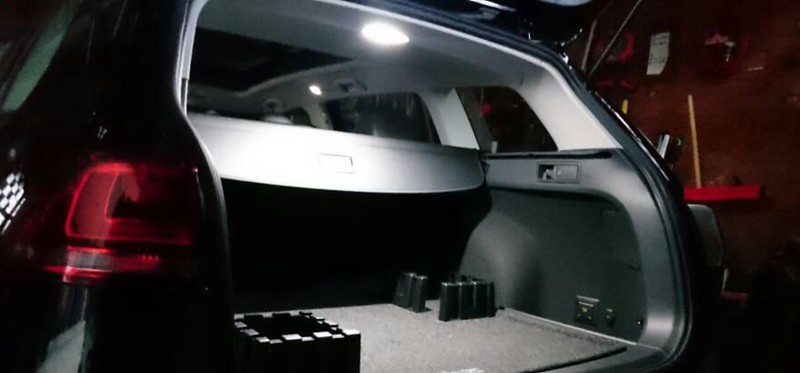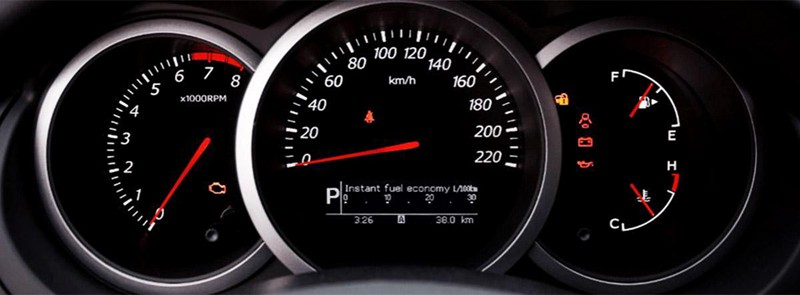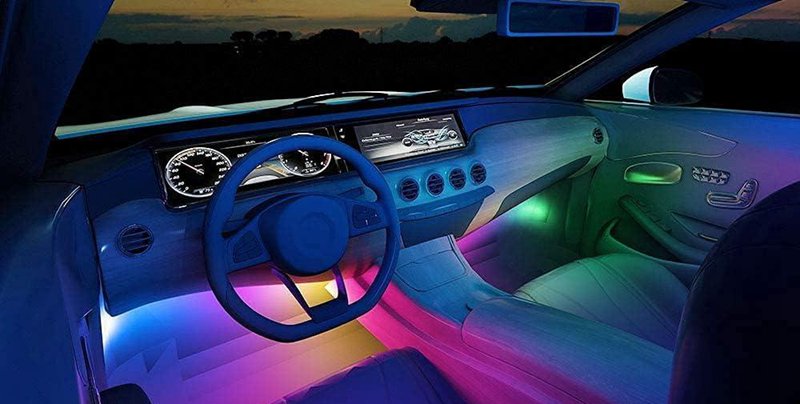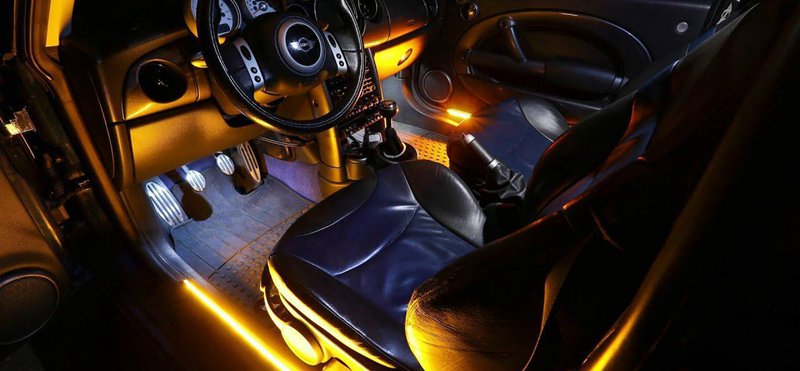Automotive interior lights are essential features that improve automobile comfort and safety. Aside from improving visibility in low light, interior lights also make a car interior unique.
In this article, we will discuss these interior car lights, the different types, features, common materials, and colors, and how to choose them.
What is Automotive Interior Light?
Unlike automotive exterior lighting, interior car lights are found within an automobile, usually in the cabin or passenger compartment, to provide illumination. In other words, they serve as the vehicle’s internal lighting source.
Interior lights are multifunctional, they do several things. For instance, they improve visibility for the driver and passengers within the car at night or in low light. These interior lights offer a source of light for reading or other activities inside the car while also enhancing the ambiance of the inside.
Interior car lights are controlled via switches, sensors, or other controls. Their power source is usually the automobile batteries or their electrical system.
Types of Interior Car Lights
There are three categories of car interior lights. These categories include displays and indicators, accent lighting, and illumination. There are also different types of interior lights that fall under the categories mentioned above. These different types also perform different functions within an automobile’s ecosystem. The different types of car interior lights include:
 1. Dome Lights
1. Dome Lights
Mounted in the center of the automobile’s ceiling, dome lights illuminate the interior of a vehicle. They often become active when opening or closing the car door or turning off the car’s ignition, illuminating its front and rear sections. This type of interior light gets power from the automobile’s electrical system.
This interior light is essential as it facilitates vision for drivers and passengers in low-light conditions. Additionally, dome lights improve a car’s interior aesthetics and comfort.
2. Door Lights
The doors of a car have lights inside or on the outside. Usually, they become active in opening the door. In low light or at night, they brighten the space around the automobile, making it simpler for drivers or passengers to get in or out. The electrical system of the car or batteries often powers door lights. Door lights often function via a dashboard switch, button, or remote control.
3. Map or Reading Lights
Map lights are one of the modern cars’ most prevalent interior car lights. Their primary purpose is reading maps, especially in regions without GPS coverage. They are tiny, movable lights generally attached to the roof of cars and trucks, ideally illuminating objects when traveling at night.
Although map lights are similar to dome lights, they are often used together, as they improve visibility greatly. A map light’s positioning makes reading books, maps, and other printed materials easy.
4. Accent Lights
These lights offer the interior of your car a classy and opulent appearance. They can be put anywhere, including the dashboard and the space under the seats. Most vehicle owners favor accent lights as they improve their automobiles’ appearance. Accent lights’ ability to change color to suit your mood is one of their best features.
 5. Trunk or Boot Lights
5. Trunk or Boot Lights
Trunk lights are interior lights that illuminate a vehicle’s trunk when it is open. These lights illuminate chores like loading or unloading the trunk, locating objects within, or carrying out car maintenance. Their importance becomes more pronounced at night when loading and unloading the trunk.
6. Footwell Lights
Footwell lights are on the car’s floor, close to the pedals. They provide light in the footwells for nighttime vehicle entry and exit.
 7. Instrument Panel and Dashboard Lights
7. Instrument Panel and Dashboard Lights
These interior lights for cars illuminate the indicators on the instrument panel and car dashboard, such as the gauges and dials. As regards size, these lights are compact and low-powered, emitting just enough light for the driver to see the indicators present on the dashboard. Being low-powered, these lights do not generate excessive power, and don’t drain the batteries too much.
Instrument panel and dashboard lights often come on when a driver turns on the car’s headlights. These lights come on with the car’s ignition for some other cars. Dashboard and instrument panel lights are important for safety as they illuminate the car’s fuel gauge, speedometer, odometer, and other essential indicators.
3 Major Automotive Interior Lighting Features
Automotive interior lighting provides illumination for several features in a vehicle. However, the major features include:
Task Lighting
This type of lighting is ideal for use when undertaking a task such as reading a map or searching for items within the glovebox. It is light-focused on a particular area of the car. Lights in this category include the map light, glovebox light, and even the registration plate light.
Ambient Lighting
This light provides overall illumination, creating a uniform lighting level for the car interior. Ambient lighting sets the tone of the car. It is often dimmable and can be soft or diffused. The dome light falls under this category, illuminating the entire car interior.
Accent Lighting
Lights in this category seek to draw attention to a specific part of the car’s interior. They are often brighter than ambient lights, and they highlight specific areas and car features. Accent lighting includes the dashboard and multimedia display.
 Common Material and Color of Car Interior Lighting
Common Material and Color of Car Interior Lighting
There are different materials used for making interior lights for cars. First, let us examine the light sources of LED and Automotive Optic Fiber. LED is one of the most commonly used light sources due to its powerful glow, durability, efficiency, and low energy consumption.
On the other hand, Fiber is a safe substitute for conventional sealed beam or halogen lighting since it transmits ‘cool’ light. The light source is readily available and gives much more in terms of design creativity, in addition to the safety benefit.
Materials for Making Car Interior Lighting
Polycarbonates
Interior car LED lights mostly use Polycarbonate (PC) as their LED plastic with good reason. Polycarbonates are naturally transparent thermoplastics that are amorphous. This material transmits light almost with the same capacity as glass. As a protective material, the PC is impact and heat-resistant. It is also flame retardant, offering all-around protection to the LED.
PMMA and ABS
Components that hold the lighting element and other non-optical elements of the car’s light are plastic auto parts made of ABS and PMMA. They are affordable, impact-resistant, lightweight, and strong options.
PC and ABS
This is a polymer produced from a combination of Polycarbonate and Acrylonitrile-Butadiene-Styrene. PC + ABS combines the excellent qualities of both materials including mechanical strength, paintability, impact, and heat resistance making it ideal for producing vehicle interior light.
Sealer
The internal components of many car interior lights are shielded from moisture, dust, and other pollutants by a sealing substance consisting of silicon or rubber. As a result, they contribute to the durability and functionality of the illumination.
 Car Interior Lighting Color
Car Interior Lighting Color
White Light
Although LEDs are not inherently white, it still produces white light when mixed with different color lights. Another way manufacturers make white LED lights is by coating a blue LED with phosphor. White LED lights inside the car improve visibility. They are ideal for making dome, map, and trunk lights as they provide optimal illumination.
RGB Lights
These are lights that can produce almost any color. The RGB means red, green, and blue. Combining these three basic colors results in the production of over 16 million light hues. RGB lights use significantly less energy. They help improve the aesthetics of a vehicle’s interior, making them ideal for use as accent lights. There are three types of RGB LED lights.
- The Classic RGB, with triple diodes on one diode (red, green, and blue on one diode).
- The RGBW, with quadruple diodes on one diode (red, green, blue, and white on one diode).
- The RGB + W, with triple diodes on one diode (red, green, and blue) as well as an additional white diode that produces pure white light.
How to Choose Custom Interior Car Lights?
Selecting the best bespoke automotive interior lighting for customization or replacement is simple. But always go with a well-known brand that utilizes high-quality lighting for the best outcomes. Factors to consider when choosing a custom interior car light include the following.
Bulb Size: First, consider the lightbulb size you require. While some vehicles come equipped with a certain type of bulb, others can use a variety of car lights. A qualified auto technician can correctly point you out if you need assistance figuring out what size or shape is appropriate for your car.
Quality: Pick high-quality custom interior car lighting to ensure a longer lifespan. A high-quality light won’t burn out or become dim. The driver and passengers won’t even experience harsh lighting. High-quality lights will undoubtedly produce significantly better results.
Features: There are many lights on the market with capabilities that let you adjust the hue to fit your mood. Various patterns can be set based on the lights you’ve put in. Before choosing a custom interior car light, you should inspect all the features of the lights.
 Design Considerations for Custom Automotive Interior Lighting
Design Considerations for Custom Automotive Interior Lighting
During the automotive design process, before choosing or producing custom car interior lights, you need to make a few design considerations.
Styling and Aesthetics
Automotive interior lighting enhances a vehicle’s overall appearance and design. To produce a unified and aesthetically pleasing design that complements the car’s brand identity, designers consider the lights’ shape, size, and placement.
Energy Efficiency
The energy consumption of the light system should be carefully considered to maximize the efficiency of energy consumed. LED and automotive fiber lights generally use less energy than conventional halogen or xenon lights.
Legal Regulations
Although there are no hard rules regarding car interior lighting design and color, there are some restrictions. For instance, in some countries, car laws state that no red colors should be visible from the car front. Additionally, some countries do not allow flashing lights within vehicle interiors.
Conclusion
Interior lighting improves an automobile’s aesthetics, making it more pleasing and comfortable. It also improves safety and visibility, especially in periods of low light. Are you looking to manufacture or prototype automotive lighting? Choose WayKen, we are experts in the production of automotive lighting prototypes and components.
At WayKen, we offer comprehensive machining capabilities such as custom CNC machining, vacuum casting, and rapid injection molding, to ensure all products and parts meet the required tolerances and industry standards. Contact WayKen for your automotive lighting projects today.
FAQs
What types of lamps are typically used for interior car lighting?
The most common type of interior car lighting is LED lights. These lights consume a minimal amount of energy. They also provide over 100,000 hours of illumination before dimming down. Also, LED lights do not produce heat or have to warm up and cool down phases seen with other light sources.
What’s the light inside a car called?
The light inside a car has several names, including interior light, dome light, and courtesy light. This light provides illumination for both drivers and passengers, allowing them to see each other or something else.
What is the best car interior light color?
The best car interior light color for your car is dependent on the car’s exterior color. For instance, if you have a car with a white exterior, then your best bet might be to choose yellow LED lights for the interior.




